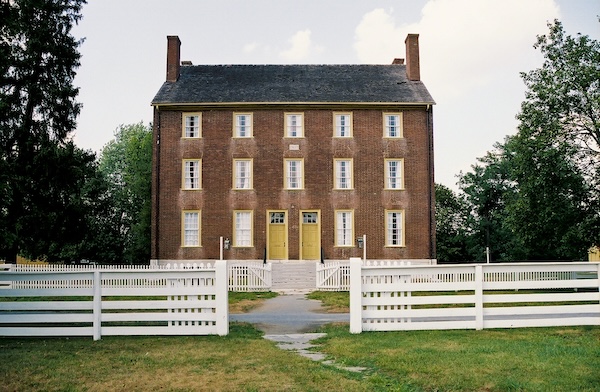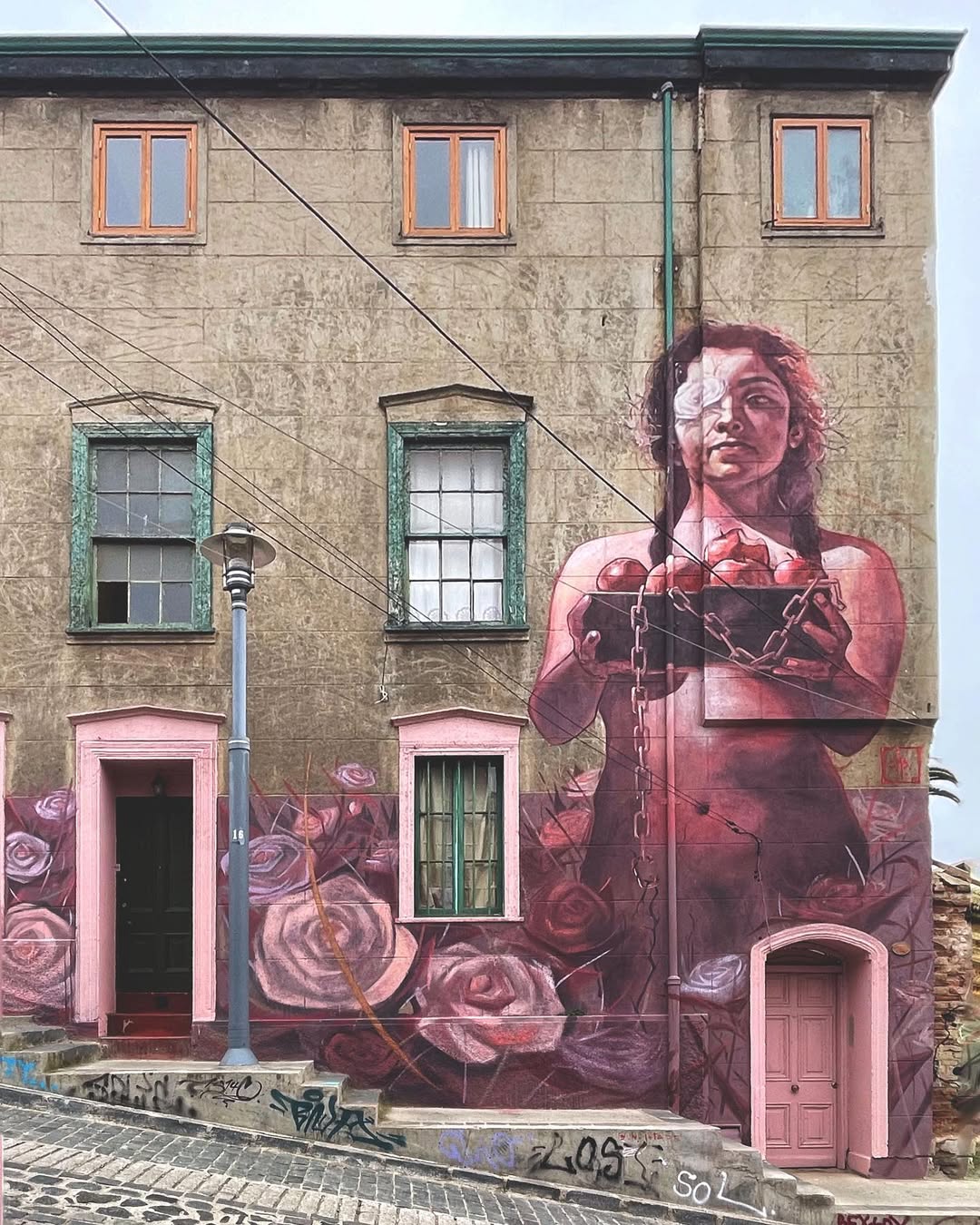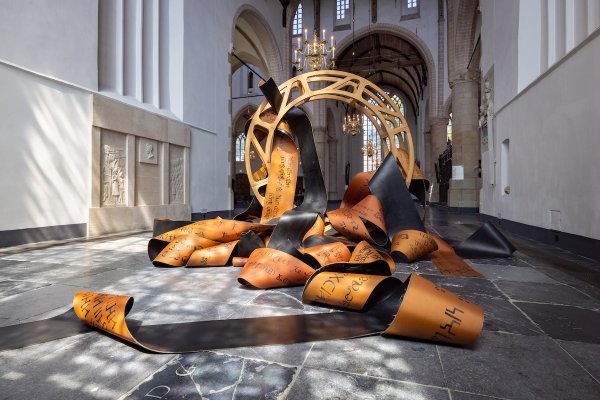
The Taste of Palestine
It is 2016 and I am balancing in an olive tree, wielding a long stick, beating the branches to bringing the rich harvest of olives bouncing down onto a large, circular ground sheet. At lunchtime I sit on the ground with a Palestinian family round a hastily lit fire. We eat a delicious meal brought from home by grandma. I am helping with the olive harvest in a family-owned grove as part of A Taste of Palestine, a project organised by the human rights group Amos Trust. Their aim is to involve supporters from the UK in the troubles of the Palestinian people, on the principle that cooking food and eating together is the best way to get to know folk, to understand their culture and hear about their problems and concerns. When I look at this painting I am transported back to that life-changing visit, and the experience of sitting and eating with the family and hearing their stories.
Picking Olives is painted by Sliman Mansour, who is an important figure among contemporary Palestinian artists. Born in 1947, he spent his childhood in the countryside around Birzeit, a Palestinian Christian town north of Ramallah. His paternal grandfather was the Arabic scholar Jeries Mansour who taught him to value traditional folk tales and culture. Grandfather on his mother’s side was a Christian Orthodox priest, Boulos Khoury. Mansour was sent to the Evangelical Lutheran School in Bethlehem where his artistic talents were recognised and encouraged. However, the Six Day War of 1967 put an end to his hopes of studying at the Chicago Art Institute. Instead, he was accepted by the Israeli-founded Bezalel Academy of Art in Jerusalem.
These experiences left a significant mark on Mansour’s work, heightening a sense of gradual loss in Palestine, especially after the occupation of the West Bank and East Jerusalem. His early experiences also presented him with the symbols and images he would later use to preserve and highlight Palestinian identity. He uses symbols derived from Palestinian life as a form of resistance. For him, orange trees represent land lost in the 1948 mass exodus of at least 750,000 Arabs from Palestine known as Al Nakba or the catastrophe. His women, who wear traditional embroidered dress, stand for Palestine itself. Images of Jerusalem and the glistening Dome of the Rock represent the Palestinian homeland and the dream of return. And olive trees like these represent the occupied land.
There is something of Soviet-style Realism here, but also something gentler, more human – a dignified resistance. In Palestine the word for this is sumud or ‘staying put despite continuous assault’. It is not merely about passive endurance, but an attitude of unyielding resistance and defiance. Those who are steadfast – that is, those who exhibit sumud – are referred to as samidin. The ultimate symbol associated with the concept of sumud and the Palestinian sense of rootedness in the land is the olive tree.

Another icon of sumud that has often been prominent in Palestinian artwork is that of the mother, and more specifically, a pregnant peasant woman. Mansour notably brings together this imagery with that of western sacred art in his Christian-themed works, such as The Flight to Egypt.

After 1989 Mansour’s practice took a radical new direction. As part of the Intifada, or uprising, Palestinians declared a boycott of all Israeli spheres of influence: political, economic and cultural. Artists responded by refusing to buy raw materials for painting, drawing and other works. Harking back to helping his grandmother mix straw with mud to make beehives as a child, Mansour began using clay and henna in bas-relief. This portrait of Hagar, who appears in both the Bible and the Quran, and who was driven from her home and abandoned, stands poignantly for the Palestinian people.

Mansour is still at work today, living and working for peace and justice in his homeland. Here is The Holy Family in an Olive Grove, painted in 2020. For him, the abiding symbol of the olive tree continues to represent the hope of restoration, justice and peace.
**********
Picking Olives, oil on canvas, 1988
The Flight to Egypt, oil on Canvas, 1984
Hagar, mud on wood, 1996
The Holy Family in an Olive Grove, 2020
Sliman Mansour (سليمان منصور), born in 1947, Birzeit, Palestine, studied fine art at the Bezalel Art Academy in Jerusalem. Mansour is known for his 1973 work Camel of Hardship depicting an old porter carrying Jerusalem on his back. Mansour has tailored his comprehensive portfolio around the Palestinian struggle, portraying peasants and women in traditional dress in his early work. During the first Intifada against Israeli occupation (1987 – 1993) Mansour and other artists in the ‘New Vision’ art movement started in 1987, boycotted Israeli supplies. Instead, Mansour used local materials like mud and henna in his work. He is a co-author of Both Sides of Peace: Israeli and Palestinian Political Poster Art, published in 1998 by the Contemporary Art Museum with University of Washington Press. https://slimanmansour.com/
Meryl Doney is an independent art curator, specialising in presenting exhibitions in cathedrals, churches, festivals and other challenging spaces. She has curated over 70 exhibitions and performance pieces, including Moon Mirror by Rebecca Horne in St Paul’s Cathedral and Presence: Images of Christ for the Third Millennium, a series of thirteen different exhibitions involving 50 contemporary artists. Between 2006 and 2011 she was Director of Wallspace, a 'spiritual home for visual art' in All-Hallows-on-the-Wall church, in the City of London. In 2015 she was guest curator for CLEY 15, the North Norfolk open-submission exhibition at Cley-next-the-Sea. She was a trustee of the Methodist Collection of Modern Art until 2018 and chaired the Art Advisory Group for St Paul’s Cathedral, London until 2020. She is currently Art in Focus editor for Reform, the magazine of the United Reformed Church in the UK.
Also see https://www.amostrust.org/palestine-justice/
ArtWay Visual Meditation September 18, 2022
%20(1).png)












